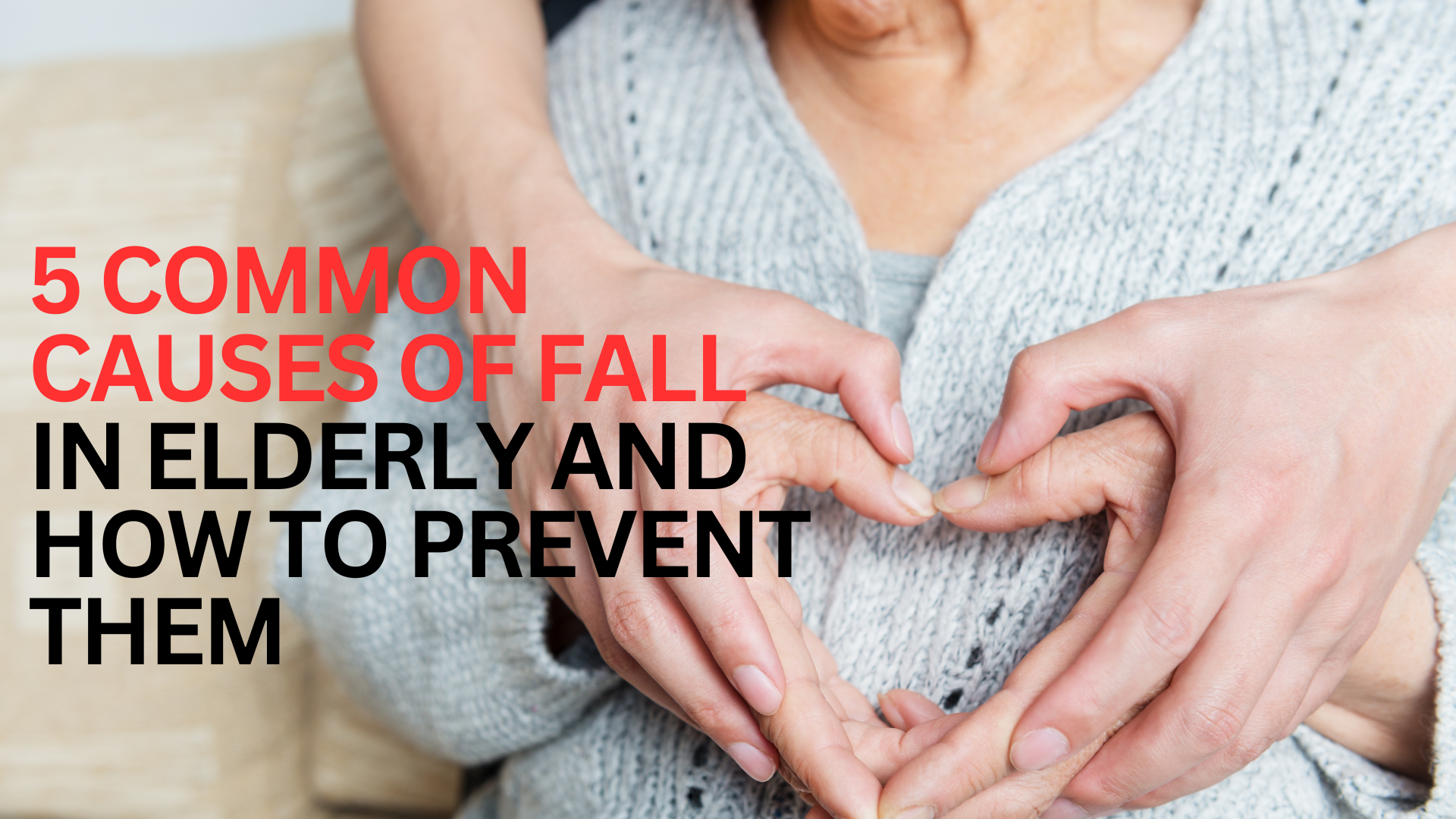Common causes of fall in Eelderly how to prevent themEven among individuals who have never fallen, the fear of falling grows increasingly widespread as a person grows older. The fear of falling is even big enough that it may cause older adults to avoid walking, shopping, and even socializing out of their comfort zone.
The fact that our bones gradually become less sturdy and more fragile as we age, increases the chance of bone fractures if an elderly falls. The muscles lose strength, flexibility, and endurance with age, hence becoming more prone to damage and fractures.
Don’t let the fear of falling prevent you from getting out and about. Overcoming this fear can assist in remaining active, maintaining physical health, and avoiding future falls.

Common causes of fall in Eelderly
To avoid fall risks, we first need to know the causes of falls. My Noble Care has been serving for adults for decades now and what we have seen in older adults is that the risk of falling is frequently linked to several factors, including:
1. Balance
Problems with balance are major. Most older adults lose coordination, flexibility, and balance as they become older, and primarily due to inactivity, it becomes easier to fall. Not only that but the Weakness of vision, vestibular difficulties, and foot sensation changes can heavily influence balance.
2. Medication
Some prescription and over-the-counter drugs might produce dizziness, dehydration, or drug reactions, resulting in a fall.
The usage of a variety of drugs. According to studies, those who take five or more medications are more likely to fall.
3. Messy Home Space also one of Common causes of fall in Eelderly
A messy home is space is one of the major reasons for falls. Because the fundamental changes to make the space safe for the adults are quite quickly neglected, resulting in a fall.
Hazards in the home include dim lighting, excessive furniture, slippery slope or surfaces, and trip hazards.
4. Chronic Illness is one of Common causes of fall in Eelderly
At least one chronic illness, such as diabetes, stroke, or arthritis, affects more than 80% of adults. Because they cause loss of function, inactivity, sadness, pain, or the need to take many drugs, they frequently increase the risk of falling.
Low blood pressure due to conditions such as orthostatic hypotension, which occurs when blood pressure lowers upon standing.
5. Behavioral Risks
The lifestyle and activities of an individual impact their risk of falling. It covers the sorts of activities people participate in, the degree of physical effort these activities impose, and their desire and capacity to change their routine to improve their safety.
Laundry, for example, is a typical daily task for many individuals. Still, it can be strenuous for seniors, especially if they have to carry a big laundry basket around their house.
HOW TO PREVENT FALLS ?
Falls are not inevitable; contrary to common assumptions, many elderly individuals can avoid falls. Some fall risk factors are simple to eliminate, and where falls do occur, the severity of injuries can be decreased.
The first step is to make an appointment with a doctor if a person feels unsteady or has a fall, even if it does not result in damage. Falls might be a sign of a more severe health issue.
1. Get Rid of the Mess
Keeping your home clean and tidy is the simplest way to avoid falling. Remove any clutter from hallways, corridors, and stairwells.
2. House Must Be adequately Lit is a Common cause of fall in Eelderly
Another fundamental problem is insufficient lighting in homes.
Install brighter lights where needed, especially in stairwells and narrow corridors, to make your house more accessible to the elderly.
For improved nighttime direction, install nightlights in bedrooms and restrooms. When the older adult gets up in the middle of the night, make sure there is enough light wherever they want to go.
3. Install Handrails and Grab Bars
Handrails and grab bars are IMPORTANT and should be installed anyways. These safety gadgets are essential for safely going up and down the stairs and stepping into and out of the bathtub.
Installing grab bars near toilets and baths and railings on stairways and corridors. If required, enlist the assistance of a handyman or a family member.
Bathroom tiles, especially when wet, may be slippery. Use a non-slip material or treatments to cover these spots.
4. Tripping Hazards Should be Repaired or Removed
Home fittings may sometimes cause falls, resulting in back discomfort and other injuries. Look in every room and hallway for anything like loose carpet, slick throw rugs, or protruding timber flooring. Then, for more effective fall prevention, repair, remove, or replace such objects.
5. Keep Track of their Health
Find out if your elderly loved one has any difficulties maintaining their health. Is it difficult for them to remember to take their meds, or are they encountering adverse effects? Is it becoming more difficult for them to perform tasks that were once simple for them?
Have regular checkups of your beloved elderly. Constantly keep an eye on them for their well-being.
Conclusion
A fall is rarely caused by only one of the factors listed above. When any of these factors come together, it can result in a severe, potentially fatal injury. Even if a loved one is fortunate enough to avoid injury after a fall, the experience might leave them traumatized.
Unfortunately, the dread of falling again can lead to withdrawal and increased sedentary behavior, which can lead to greater physical and mental impairment. Learn how you may assist your loved one in thousands of ways by following the weekly blogs and daily content here.
Published by HFA on January 14, 2024

